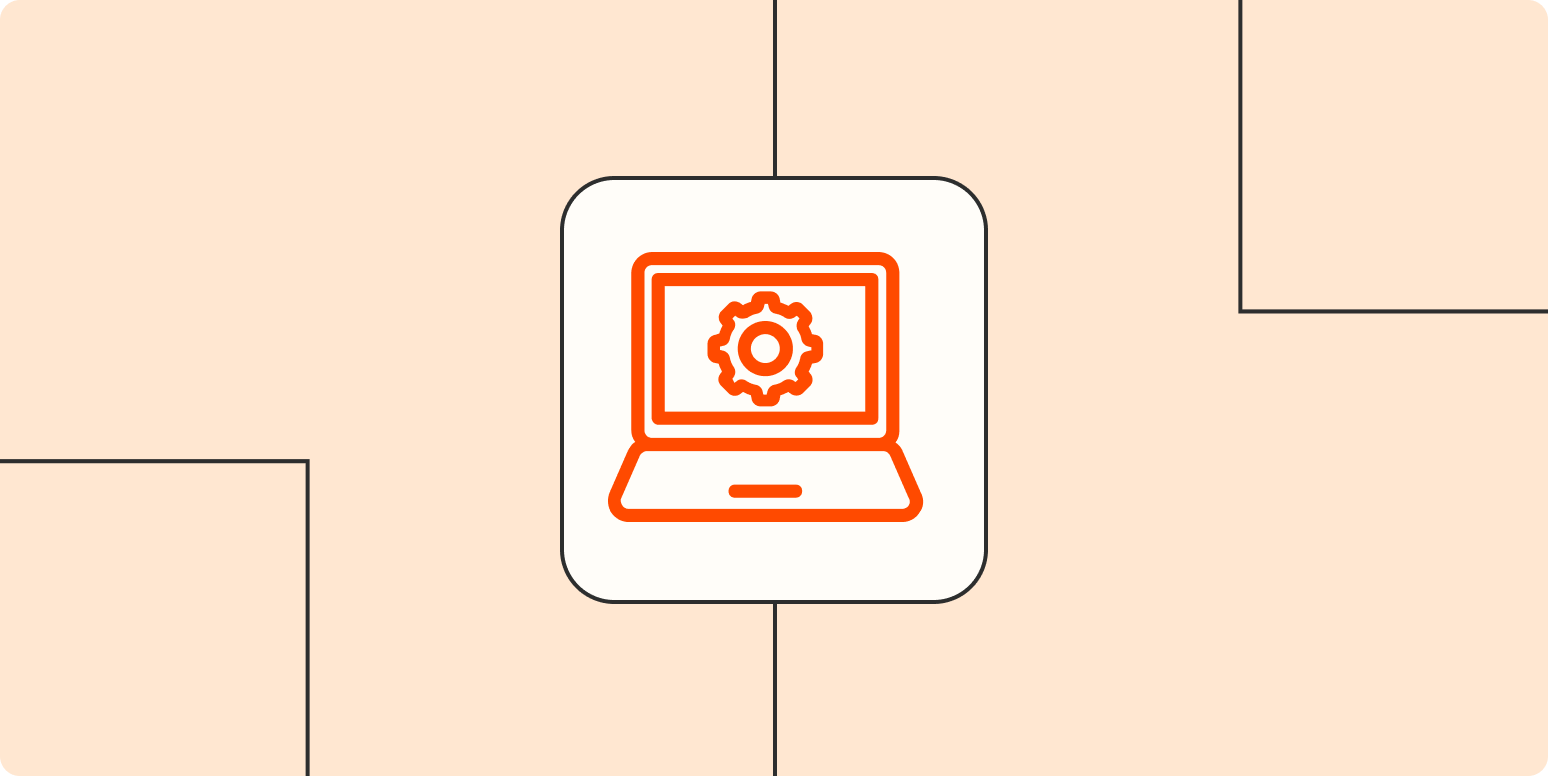The IT department is one of the most important (and often under-appreciated) parts of a modern business. Not only are IT teams responsible for keeping key business infrastructure like servers up and running, but they also have to support the hardware and software needs of the entire company. This can mean managing hundreds or thousands of different devices, applications, software packages, and everything in between. If you struggle to keep your laptop up-to-date, imagine having to keep 250 of them patched with the latest security updates—and that’s just the tip of the iceberg.
ITSM (or information technology service management) is an approach to delivering IT services to customers—in most cases, other employees in the same business. Here’s how it works.
What is ITSM?
ITSM is one of the leading approaches to providing IT services in large organizations. It views IT provisioning as a customer-first service, rather than as a static system.
For example, instead of just handing an employee a laptop and expecting them to make do, ITSM is concerned with providing an end-to-end service that allows the person to request a laptop, configure it to their needs, and get help if things go wrong.
ITIL is the most popular ITSM framework. It used to stand for IT infrastructure library, but now, it’s a standalone term. Axelos is responsible for updating the framework and managing certification for IT providers.
The current version of ITIL—ITIL 4—identifies 34 ITSM practices, including:
-
Service request management. The procedures for handling IT requests from customers, like requests for a new laptop or access to a specific app.
-
Knowledge management. The process of creating and sharing the knowledge and information of the organization so that customers can access it. In other words, providing how-to guides for everything from connecting to Wi-Fi to using the payroll app.
-
IT asset management (ITAM). The process required to manage the deployed assets (e.g., computers, phones) of the organization.
-
Incident management. The process of responding to unplanned service interruptions and other events, and returning everything to normal function. For example, restarting the office server after a power outage.
-
Problem management. The process of identifying and mitigating the causes of IT-related incidents within the organization. For example, ensuring all the computers have the latest security updates installed.
-
Change management. The procedures involved in updating the IT infrastructure, like rolling out new devices or onboarding customers to new apps.
What do ITSM tools do?
ITSM tools are the systems and apps that enable IT teams to do all that—to undertake some or all of the relevant ITSM practices. In practice, this means that many ITSM tools are built around a service desk or ticketing system. Customers or managers submit a ticket to the IT team through an internal portal, and it’s assigned to the technician best able to address the request or issue. This allows the IT team to respond to requests and problems dynamically as they arise.
In small organizations, email often works as a rudimentary ITSM tool. If there’s only one IT technician, they just get emailed when something is needed or if there’s an issue. Of course, there are a huge number of problems with this approach, which a good ITSM platform attempts to overcome.
For example, if our email-reliant IT technician is getting emailed the same questions every day, it’s a waste of their time to respond to each one individually. Some kind of searchable knowledge base that customers can access themselves is a much more sensible system. Similarly, all emails come in with the same priority—it’s ridiculous that the main server going down and a request to purchase a laptop for a new hire starting next month are sent to the same inbox.
ITSM best practices: What to look for in ITSM software
Most ITSM platforms start with the service desk or ticketing system. This is what customers use to interact with the IT department. Some ticketing systems use their own internal portal, while others integrate with existing tools like Slack.
The ticketing system can just be a way to contact IT, but the best ITSM tools also incorporate self-service tools, automation, and knowledge bases. For example, some tools use virtual agents or chatbots to help customers help themselves. When a customer contacts IT, they’re asked to explain their problem. If they say something like “I can’t connect to Wi-Fi,” the virtual agent will link them to the relevant knowledge base article automatically. While these features can take a while to configure correctly, they do a lot to minimize the amount of repetitive, basic, or common requests that the IT department has to deal with.
On the other side of things, the service desk has to assign tickets to IT team members. They can go to a general inbox, or with more automation-heavy tools, be assigned based on predefined rules. For example, a provisioning workflow could be created to handle all new device requests. When a customer requests a laptop or other device, the ticket is first assigned to their direct supervisor, who has to sign off on the purchase. Once they do so, it can be automatically assigned to someone in the purchasing department who actually buys it, before being assigned to an IT technician to set up.
With the more general tickets, there needs to be some way of prioritizing and sorting assigned tickets. Some requests need to be handled far quicker than others. Similarly, you need some kind of collaboration within the service desk, so other IT technicians and managers can see what everyone else is working on or how customer problems have been solved in the past.
Aside from these kinds of specific features, a good ITSM solution should be easy to use—both for the IT department and their customers. This may mean a simple interface, but it can also mean deep integrations with existing tools that the company already uses. (Zapier uses an ITSM tool that integrates directly with Slack since that’s where a lot of other work gets done.)
ITSM tools are available for everything from small startups to huge enterprises. Accordingly, some tools charge small monthly fees per seat, while others require five-figure annual service contracts. The best ITSM tool for your organization will be the one that best fits its needs and budget, not necessarily the most expensive enterprise application you can find.
What is the best ITSM software?
There are dozens of ITSM tools available—here are some of the biggest names:
Tips for choosing an ITSM tool
Choosing an ITSM platform is challenging: because there are so many good options, it can be hard to tell which is the right one for your organization. To help, I talked to a number of IT professionals, technicians, and managers to see what was important to them when they had to do it. Here’s what they said.
-
No one has ever been fired for going with Zendesk. While there are many smaller ITSM applications out there, the big names like Zendesk and ServiceNow offer a great product with almost all the features any organization could need. If you aren’t sure what tool is right for your team or how your needs will change over time, one of the big, general-purpose apps is your best bet.
-
Think about what your customers are familiar with. Your ITSM tool is meant to make it easy to provide IT services and support, not be another source of problems. Look for tools that meet your customers where they are. If they rely on Slack, go for Slack integration. If they’re email-based, look for a tool that has robust email ticketing.
-
Costs can add up. Especially for smaller organizations, check how the tool is priced. If you have a small number of agents, a per-seat cost rather than a larger contract may be more cost-effective.
-
Watch the demos and talk to sales. Unlike when you’re buying consumer software, with professional software like ITSM tools, the sales teams can genuinely be a great help. Schedule a demo, and ask to see how the specific features your organization needs work. Try a few apps, and you’ll find the one that’s right for your organization.
Having a robust ITSM system can change the way your organization functions, so if you’re still using one person’s inbox to manage your IT operations, it’s time for a change.
Related reading:
[adsanity_group align=’alignnone’ num_ads=1 num_columns=1 group_ids=’15192′]
Need Any Technology Assistance? Call Pursho @ 0731-6725516




